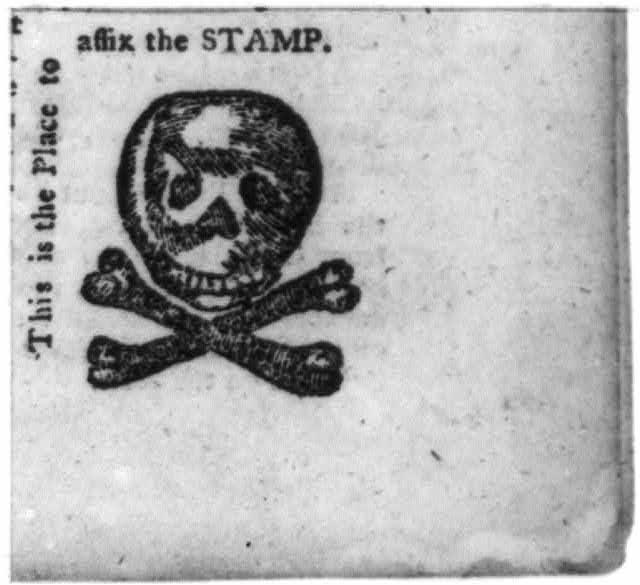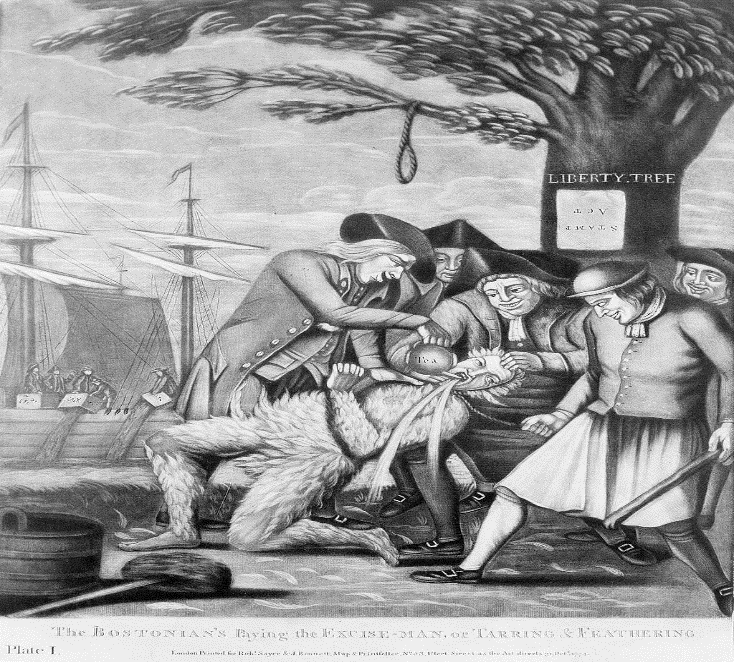Introduction
Throughout the 1700s, the British government and its colonies had tension-filled relationships. The end of the French and Indian war in 1763 increased the tensions even further, and most of the colonies started demanding rights that their ancestors thought were privileges (Otis). Britain had started losing grip on its colonies, and the mutual relationship was deteriorating because they were no longer keeping their colonies as happy as before. The most significant event that led to the American Revolution was the taxes imposed on Britain’s colonies to cover their after-war debt.
Taxation without representation
Political analyst and Lawyer James Otis stated that taxation without representation is wrong. According to Otis, the British monarch was wrong to tax its colonies without representation. Although he accepted that there must be a sovereign power in society to preside over, the power should not be bestowed on a single individual because it would lead to idolatry, pride, and flattery. Therefore, to ensure equal power, the government had to seek representatives from the whole territory to present the people’s opinions in decision-making (Otis). When the British monarch imposed new taxes on its American colonies to service its hefty war debt, there was not an adequate representation of the American colonies, which led to the resistance of the taxes hence a revolution.
Trade regulations
The other factor that led to the revolution was regulating Great Britain’s trade with the colonies. The regulation of products is a legal authority that is given to the sovereign power, but it should be done for the common good of all the people involved. According to John Dickson’s letters from Pennyslavian farmers, American colonies had to be treated the same as British states (Dickinson and Richard 26). All the statutes in the colonies were based on the Stamp Act Administration. Previously, stamp duties were imposed to create a balance in the market and ensure that commerce in one part does not injure other parts. However, the British Parliament passed the stamp act to generate revenue, which would help them pay their war debt by paying off soldiers and colonial administration. The stamp act required colonies to buy stamps for land, books, newspapers, advertisements, contracts, and even playing cards (Dickinson and Richard 28). Following this, William Brandford published an image in the Pennsylvania Journal and Weekly Advertiser, which he stated Stamp tax as slavery, and therefore he would stop publishing his paper for a while. Stamp tax led to much resistance from the colonies, the most remarkable being from Patrick Henry from Virginia, who came up with resolutions that hindered the Parliament a right to tax the colonies and asked other colonies to resist (Dickinson and Richard 54). This shows that the act of Britain to use the Stamp Act as a way of funding his war debts also led to significant resistance from American colonies.

The bloody massacre perpetrated in King Street Boston
Revere Paul’s image below shows the events that occurred after the introduction of the Stamp Act. When the colonists realized that the British were imposing an unjust tax on them, they started revisiting by conducting demonstrations which sometimes led to clashes between the patriot colonists and loyalist colonists (Greenwalt). The patriot colonists could conduct random protests and destroy stores selling British products. The bloody massacre in King Boston’s Street on 5 March 1770 resulted from one British soldier who was left to guard the King’s money stored in the Custom’s House on King Street, Boston. Hugh White was the only soldier guarding when patriot colonists started protests and threatened violence (Greenwalt). He fought back, but he called for backup to prevent the colonists from vandalizing the King’s money and treasure due to pressure. Captain Thomas Preston came to his rescue with soldiers and created a defensive formation at the Custom front house to shield it. Violence by the patriot colonists escalated very fast, and he ordered a “fire” command whereby his soldiers fired on the protestors leading to the death of five patriot colonists and six wounded (Greenwalt). This “Boston Massacre” event allowed the patriot colonists to start the official fight against British rule and ignited the war and raging resistance.

Tarring and feathering
One of the main ways of torturing the British loyalists in American colonies was tarrying and feathering. This was a way that the patriot colonists commonly used to influence public opinion. John Malcolm, a British loyalist, disagreed with George Hewes, a patriot colonist, concerning the rough treatment of a young boy in the streets. Malcolm hit George with a walking stick and ran away. That evening, patriots gathered and organized demonstrations headed to Malcolm’s house. The angry protestors dragged him outside his home and put him on a cart to be driven through the city. The protesters stripped his clothes off and covered him with tar and feathers on his skin (Greenwalt). They asked him to renounce the British rule, but he denied then they drove to the liberty tree to torture him. The image shows the protestor pouring tea down his throat, a rope tied to his neck hanging on the liberty tree, and the “Stamp Act” nailed on the tree upside down to demonstrate their disregard for it. This event warned other British loyalists to avoid misusing the patriotic colonists.

Supporters for British Rule
However, despite the heavy taxes imposed on American colonies, some authors still supported British rule. Soame Jenyns, a poet and member of Parliament, stated that Britain’s government had the right to impose taxes on its colonies (Jenyns 11). He argued his points based on three propositions; an Englishman should not be taxed without his consent, Englishman should not be taxed without the consent of his representatives, and Englishman should not be taxed without the consent and approval of the majority of the elected members. In his context, he argued that no person is taxed based on his consent. Tax is an obligation, and therefore, the government does not need consent to tax its colonies. They stated that as long as the colonies anted protection from Britain, they had an obligation to pay taxes to it (Jenyns 14). This showed that the colonies were supposed to pay taxes to fund the war debt without questioning because they expected the same troop to protect them in case of an invasion.
Conclusion
There were various causes of the American Revolution; however, they were all rooted in the high taxes imposed by British rule. Taxing the colonies without representation made them feel like the system was not just and therefore had to resist it. When the Americans also noticed that the heavy taxes imposed on them was not for their general good but to pay Britain’s war debt, they also started resisting. The three pictures show how the stamp act led to resistance, leading to the bloody massacre and tarrying and feathering of Bostonian’s exciseman. However, some people supported the taxations such as Soame stating that it was Britain’s obligation to provide protection to its colonies, so they also had to pay taxes to it. Therefore, it is evident that taxes were the main cause of the American Revolution.
Works Cited
Bradford, William. “This is the place to affix the stamp.” 24 October 1765. Library of Congress Prints and Photographs Division.
Dawe, Philip. “Bostonian’s Paying the Excise Man, or Tarring and Feathering.” London: Printed for Robt. Sayer & J. Bennett, Map & Printseller, 1774. Library of Congress Prints and Photographs Division. Web.
Dickinson, John and Lee, Richard. Empire and Nation: Letters from a Farmer. Liberty Fund, 1962. pp. 1-86. Accessed 22 Feb. 2022.
Greenwalt, Phillip S. “British Perspective American Revolution.” American Battlefield Trust, Web.
Jenyns, Soame. The Objections to the Taxation of Our American Colonies: By the Legislature of Great Britain, Briefly Consider’d. J. Wilkie, 1765, pp. 1–20.
Otis, James. “The Rights of the British Colonies Asserted and Proved.” Teaching American History, 1764, Web.
Revere, Paul. “The bloody massacre perpetrated in King Street Boston on 5 March 1770 by a party of the 29th Regt.” Boston: Engrav’d Printed & Sold by Paul Revere, 1770. Library of Congress Prints and Photographs Division. Web.